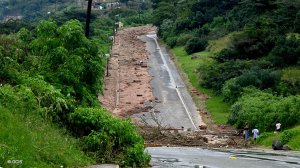After the deadly floods that ravaged KwaZulu-Natal last year, the provincial education department spent millions on classrooms for affected schools, many of which remain unsuitable.
Of the 74 mobile classrooms built at a cost of R18-million following torrential floods that destroyed 356 schools, an audit report revealed 16 classes were incomplete and unsuitable for learning.
In a report presented to Parliament's Cooperative Governance and Traditional Affairs Oversight Committee on Tuesday, the Auditor-General revealed the department spent millions on dysfunctional structures.
This is the first time the Auditor-General of South Africa, Tsakani Maluleke, conducted an audit as money was being spent, rather than after the fact.
The 74 classrooms, which were built to accommodate 40 children and two kitchens, were distributed among 26 schools, specifically in Pinetown, Umlazi, and Ugu.
The flood report stated repairing and reconstructing the destroyed schools began in September 2022, and was meant to have been completed by March 2023.
Maluleke conducted onsite inspections at one of the five schools selected, and discovered that although the department built 13 units at a considerable pace, it "did not address the need" at Brettenwood High School.
The three-storey school, which accommodates 880 people, was built on land with signs of damage affecting its "structural integrity", placing the lives of many at risk.
Four of the 13 units were situated on the ground floor, which upon structural assessment, showed it was built on land previously "submerged by the floods".
It was also revealed two of the four units had to be vacated in May 2022 due to heavy rains that delayed the construction of the remaining classrooms.
As a result, the department told auditors it had appointed the Development Bank of Southern Africa to attend to the renovation and repair of the school to address "structural concerns".
During this period, hundreds of pupils occupied the second and third floors, causing overcrowding and depriving pupils of a suitable learning environment.
According to the report, 16 of the 53 units were falsely reported as being completed by the education department and needed to be of a better standard.
Five schools under assessment, including Maphephetheni Secondary and Siphosethu School, were built on ground that needed to be levelled to make it more suitable for the mobile units.
"Certifications of compaction had not been issued at the date of our audit, as required per the specifications. We further reported quality defects at all five schools selected for auditing, including untreated material; rust on steps and overhanging sheets due to poor coating; uneven floors and poorly laid vinyl; instability and poor support of installations; electrical non-compliance; and inadequate weatherproofing," Maluleke said.
In addition to these issues, Maphephetheni Secondary was built three metres from an eroding embankment.
The AG attributed the delays to poor project monitoring and oversight across key stages.
The department said pressure to ensure "continuous learning" was blamed for these absences.
EMAIL THIS ARTICLE SAVE THIS ARTICLE
To subscribe email subscriptions@creamermedia.co.za or click here
To advertise email advertising@creamermedia.co.za or click here











